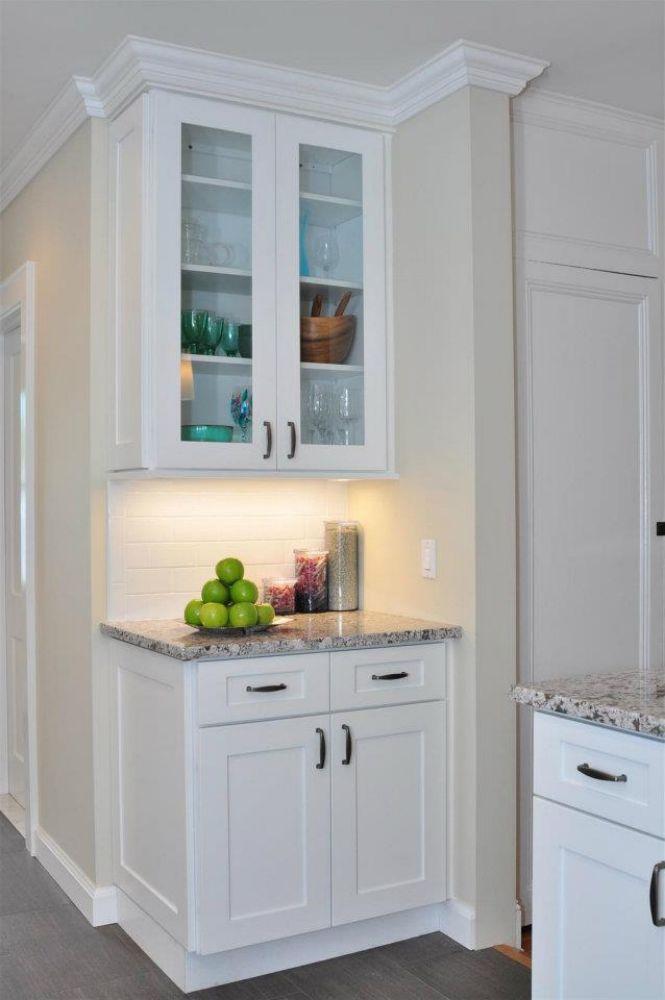Understanding the Importance of Choosing Cabinets for Allergy Sufferers
For individuals with allergies or respiratory sensitivities, the home environment plays a vital role in overall health. Airborne irritants such as dust, pollen, volatile organic compounds (VOCs), and mold can worsen symptoms and affect air quality indoors. One of the most overlooked contributors to indoor air quality is cabinetry. Since cabinets occupy a significant portion of kitchen and bathroom spaces, selecting the right type can make a profound difference. That’s why Choosing cabinets for allergy sufferers requires careful evaluation of materials, finishes, and certifications to ensure a cleaner, healthier living environment.
The Connection Between Cabinet Materials and Allergies
Cabinet materials directly impact air quality. Traditional cabinets may contain formaldehyde-based adhesives, paints, or finishes that release harmful VOCs into the air over time. These compounds can trigger allergies, headaches, respiratory irritation, and even long-term health issues. Allergy sufferers benefit from cabinets made of low-VOC or VOC-free materials such as solid wood, plywood with non-toxic glues, or medium-density fiberboard (MDF) that meets strict emission standards.
Low-VOC and Non-Toxic Finishes for Better Indoor Air Quality
Finishes are often the main culprits behind chemical off-gassing. Many conventional paints and sealants emit VOCs long after installation. To minimize exposure, homeowners should opt for water-based finishes and sealants that meet GREENGUARD Gold or similar certification standards. These finishes release fewer harmful emissions, helping maintain safe indoor air for sensitive individuals. Low-VOC finishes also ensure that kitchen odors do not trigger allergic reactions or cause respiratory distress during daily cooking and cleaning.
Benefits of GREENGUARD Gold Certified Cabinets
Cabinets with GREENGUARD Gold certification undergo rigorous testing to ensure they meet strict chemical emission limits. This certification provides confidence that the cabinets contribute to healthier indoor air quality. For allergy sufferers, this means a significant reduction in allergens and irritants. The GREENGUARD Gold label guarantees that the cabinets are safe for use in environments such as schools and healthcare facilities, making them ideal for homes where health and cleanliness are top priorities.
Understanding Formaldehyde-Free Cabinet Construction
Formaldehyde is a common compound used in adhesives and composite wood products, but it’s also a known irritant and potential carcinogen. Prolonged exposure to formaldehyde can cause symptoms like eye irritation, coughing, and nasal congestion—issues particularly troubling for allergy sufferers. Choosing formaldehyde-free cabinets eliminates one of the most significant sources of indoor pollutants. Many high-quality cabinet brands now use alternative adhesives made from soy or other bio-based resins to avoid harmful emissions.
Moisture Resistance and Mold Prevention
Another key factor in choosing cabinets for allergy sufferers is moisture resistance. High humidity or water leaks can lead to mold and mildew growth behind and under cabinets. Mold spores are among the most common indoor allergens, and they can severely affect individuals with asthma or allergies. Opting for moisture-resistant cabinet materials, such as treated plywood or thermofoil, can help prevent mold development. Additionally, proper ventilation and installation in areas like kitchens and bathrooms are critical to maintaining a dry, allergen-free space.
Sealed Surfaces and Easy-to-Clean Designs
Cabinet design and surface texture also influence allergen control. Smooth, sealed surfaces are easier to clean and prevent dust accumulation. Cabinets with grooves or raised panel designs, while visually appealing, can trap dust and particles over time. For allergy sufferers, choosing flat-panel or slab-style doors can significantly reduce cleaning time and exposure to allergens. High-quality finishes that resist smudging and staining further enhance hygiene by keeping surfaces spotless with minimal effort.
Importance of Proper Ventilation Around Cabinets
Even the best allergy-friendly cabinets can only perform well when combined with proper home ventilation. Without adequate airflow, VOCs and allergens can linger indoors. Installing range hoods, exhaust fans, and air purifiers near kitchen cabinets can help maintain fresh air circulation. Allergy sufferers may also benefit from using HEPA-filtered vacuum systems to clean around cabinet bases, removing any dust buildup or lingering irritants.
Solid Wood vs. Engineered Wood Cabinets for Allergy Control
Solid wood cabinets are often considered superior for allergy sufferers because they contain fewer synthetic materials and adhesives. However, modern engineered wood cabinets with low-VOC emissions can also be safe when they meet strict environmental certifications. Solid wood options such as maple, oak, or birch provide natural beauty and durability without releasing harmful chemicals. Engineered wood, when responsibly manufactured, can offer comparable performance with enhanced moisture resistance and lower costs. The key is to ensure that the engineered materials are certified for low emissions.
Eco-Friendly Manufacturing and Air Quality Standards
Manufacturers committed to sustainability often produce cabinets that are safer for allergy sufferers. Environmentally conscious production methods minimize exposure to harmful chemicals and pollutants during and after construction. By selecting brands that follow CARB Phase 2 (California Air Resources Board) or EPA TSCA Title VI standards for formaldehyde emissions, homeowners can ensure that their cabinets contribute to a healthier living environment. These certifications align with the growing demand for eco-friendly, non-toxic home products that prioritize long-term wellness.
The Role of Proper Installation in Reducing Allergens
Even the most allergy-friendly cabinets can cause issues if improperly installed. During installation, cutting, sanding, or drilling can release dust and fine particles into the air. To mitigate this, installers should use dust-containment systems and vacuum attachments. Sealing all cabinet joints and gaps also prevents dust accumulation behind and underneath units. For individuals with allergies, it’s wise to stay away during installation and allow the space to ventilate before use.
Cabinet Cleaning and Maintenance Tips for Allergy Sufferers
Regular cleaning is essential to keep allergens at bay. Use a microfiber cloth or damp towel to remove dust and debris from cabinet surfaces. Avoid harsh chemical cleaners that may introduce additional irritants into the air. Instead, opt for mild, natural cleaning solutions like diluted vinegar or plant-based sprays. Wiping down handles, door edges, and hinges can prevent buildup in small crevices. For deep cleaning, ensure proper ventilation to minimize exposure to airborne dust or cleaning agents.
Cabinet Hardware Choices for Sensitive Individuals
Hardware materials can also affect those with allergies. Nickel, brass, or certain metal alloys can cause skin irritation for sensitive individuals. In such cases, choosing hypoallergenic stainless steel or powder-coated hardware provides both style and safety. Smooth handles and knobs are easier to sanitize and less likely to harbor bacteria or allergens. Combining allergy-friendly hardware with low-emission cabinetry enhances the overall comfort and cleanliness of the living space.
Integrating Air-Purifying Design Elements in the Kitchen
The kitchen can be one of the most allergy-prone areas in a home due to cooking fumes, grease, and humidity. Integrating cabinetry with air-purifying materials and finishes can help maintain a balanced indoor environment. Some modern cabinet brands even incorporate antimicrobial coatings that reduce the growth of mold and bacteria. When combined with efficient ventilation systems and non-toxic building materials, these features create a healthier and more sustainable kitchen.
Matching Design Aesthetics with Health Priorities
Choosing cabinets for allergy sufferers doesn’t mean compromising on style. Many modern manufacturers offer an array of designs that balance beauty and health safety. Homeowners can enjoy sleek finishes, elegant textures, and contemporary hardware without sacrificing air quality. The goal is to select cabinetry that enhances both the aesthetics and functionality of the home while keeping allergen control a top priority.
The Long-Term Benefits of Health-Conscious Cabinetry
Investing in allergy-friendly cabinets is an investment in long-term well-being. Reduced exposure to harmful chemicals and allergens leads to better respiratory health, fewer allergic reactions, and improved indoor comfort. Moreover, low-emission and durable materials typically require less maintenance, saving homeowners time and effort in the long run.
Conclusion
Choosing cabinets for allergy sufferers involves more than just picking a design—it’s about creating a safe, comfortable, and breathable home environment. By focusing on low-VOC materials, GREENGUARD Gold certifications, moisture resistance, and proper ventilation, homeowners can dramatically reduce exposure to allergens and irritants. As awareness of indoor air quality continues to grow, allergy-friendly cabinetry has become a vital step toward achieving a cleaner and healthier home.

